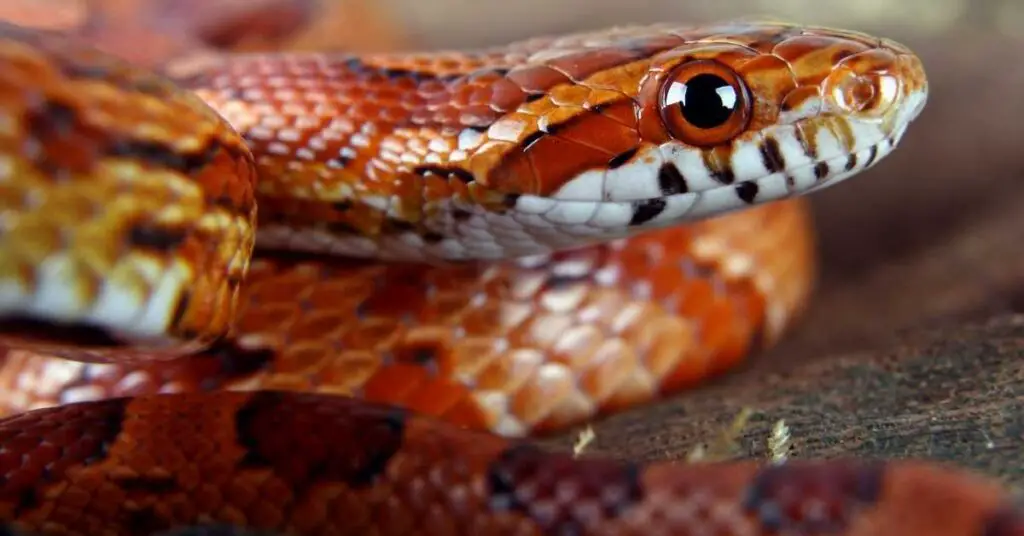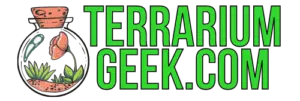If you’ve ever wondered about the activity patterns of corn snakes, you may be interested in exploring their crepuscular nature.
While their behavior during certain times of the day might not be as straightforward as you might think, understanding the crepuscular tendencies of these reptiles can offer valuable insights into their natural habitat and captive care.
So, what exactly does it mean for a corn snake to be crepuscular?
Well, let’s shed some light on this fascinating topic and uncover the secrets of their captivating behavior.
Key Takeaways
- Crepuscular behavior is a natural and important aspect of corn snake behavior.
- Corn snakes exhibit crepuscular behavior to hunt effectively and avoid heat and dehydration.
- Understanding crepuscular behavior is crucial for conservation and ecosystem balance.
- Factors such as captivity and environmental conditions can impact the crepuscular behavior of corn snakes.
What Is Crepuscular Behavior?
Crepuscular behavior refers to the activity patterns exhibited by corn snakes, characterized by their increased activity during dawn and dusk. This behavior isn’t exclusive to corn snakes; it can also be observed in various other animal species.
The benefits of crepuscular behavior lie in the advantages it provides for hunting and foraging. By being active during the twilight hours, corn snakes can take advantage of the reduced visibility to hunt their prey more effectively. This increased activity during dawn and dusk also allows them to avoid the scorching heat of the day, conserving energy and preventing dehydration.
However, there are also disadvantages to crepuscular behavior. One major disadvantage is the increased risk of predation. As corn snakes are more active during the times when many predators are also hunting, they’re more likely to encounter potential threats. Additionally, the reduced visibility during dawn and dusk may make it more challenging for them to detect predators approaching.
Crepuscular behavior isn’t unique to corn snakes. Many other animal species exhibit similar activity patterns, including deer, rabbits, bats, and certain bird species. This behavior has evolved as a survival strategy, allowing these animals to maximize their chances of finding food while minimizing their exposure to predation.
Understanding crepuscular behavior in different animal species is crucial for conservation efforts and maintaining balanced ecosystems. By studying and appreciating these behaviors, we can gain a deeper understanding of the natural world and our place within it.

The Natural Habitat of Corn Snakes
Corn snakes are native to the southeastern United States and are predominantly found in a variety of habitats, including forests, grasslands, and even suburban areas. In their natural habitat, corn snakes are well adapted to these diverse environments. They’re excellent climbers and can be found in trees, as well as on the ground. This adaptability allows them to hunt and find shelter in a wide range of locations.
Corn snakes have a natural diet that consists primarily of small mammals, such as mice and rats. They’re constrictors, meaning they use their powerful bodies to squeeze and suffocate their prey before swallowing it whole. This diet provides them with the necessary nutrients and energy to survive and reproduce.
Speaking of reproduction, corn snakes exhibit interesting reproductive behavior. They’re oviparous, meaning they lay eggs instead of giving birth to live young. Female corn snakes typically lay a clutch of 10-30 eggs, which they incubate for around 60 days. Once the eggs hatch, the young corn snakes are independent and must fend for themselves.
Understanding the natural habitat of corn snakes is crucial for their conservation and well-being. By preserving their diverse habitats and ensuring the availability of their natural diet, we can help these fascinating creatures thrive in their native environments.
Activity Patterns in Corn Snakes
Activity patterns play a crucial role in understanding the behavior and habits of corn snakes. These patterns provide valuable insights into their activity levels and sleep patterns.
Here are three key aspects of corn snake activity patterns:
- Nocturnal tendencies: Corn snakes are primarily nocturnal creatures, meaning they’re most active during the night. This behavior allows them to avoid extreme temperatures and potential predators, as well as hunt for prey under the cover of darkness.
- Crepuscular activity: While corn snakes are predominantly nocturnal, they also exhibit crepuscular behavior. This means they’re active during the twilight hours of dawn and dusk. During these times, they may engage in basking, exploring their surroundings, or hunting for food.
- Resting and sleep patterns: Corn snakes require periods of rest and sleep to maintain their overall well-being. After a bout of activity, they seek out sheltered places to rest and recharge. This may involve hiding in burrows, crevices, or other secure locations within their habitat. The duration and frequency of their resting periods may vary depending on factors such as temperature, food availability, and reproductive status.
Understanding the activity patterns of corn snakes can help snake enthusiasts and researchers create suitable captive environments, replicate natural conditions, and ensure the overall health and happiness of these fascinating reptiles.
Observations of Corn Snakes in Captivity
To further understand the behavior of corn snakes, it’s valuable to observe their activity patterns in captivity. Observing their behavior in controlled environments allows researchers and snake enthusiasts alike to gain insight into their natural tendencies and preferences.
One aspect of observation focuses on their diet preferences. When observing corn snakes in captivity, it becomes apparent that they’ve a diverse diet. In the wild, corn snakes primarily feed on small mammals, such as mice and rats. However, in captivity, they can adapt to a variety of food sources. This adaptability is beneficial for owners, as it allows for a more varied and accessible diet for their snakes. Corn snakes have been observed consuming birds, lizards, frogs, and even other snakes.
Furthermore, observing the behavior of corn snakes when presented with different food options can provide valuable insights into their feeding habits. Some individuals may show a preference for certain foods, while others might be more opportunistic and consume whatever is available. These observations can help owners tailor their snake’s diet to ensure they receive the necessary nutrients for optimal health and well-being.
Factors Influencing the Activity of Corn Snakes
Factors that influence the activity of corn snakes include environmental conditions, prey availability, and individual characteristics. Understanding these factors can help us better understand the behavior of corn snakes.
Here are three key factors that influence the activity of corn snakes.
- Environmental conditions: Corn snakes are ectothermic reptiles, meaning their body temperature is regulated by the environment. They’re most active when the temperature is within their preferred range of 75-85°F (24-29°C). Cooler temperatures can cause them to become less active, while excessively hot temperatures may lead to decreased activity as they seek shelter. Additionally, humidity levels can also impact their activity, with higher humidity levels being more favorable for their overall well-being.
- Prey availability: Corn snakes are carnivorous and primarily feed on small rodents, such as mice and rats. The availability of prey in their environment directly affects their activity levels. When prey is abundant, corn snakes may exhibit increased activity levels as they search for and consume food. Conversely, during periods of prey scarcity, they may reduce their activity and conserve energy.
- Individual characteristics: Every corn snake is unique, and individual characteristics can also influence their activity patterns. Factors such as age, sex, and overall health can impact their activity levels. For example, younger corn snakes may be more active and curious, while older individuals may exhibit more sedentary behavior. Additionally, breeding seasons can influence the activity of male corn snakes, as they may become more active and exhibit mating behaviors.
Comparing Crepuscularity in Corn Snakes and Other Species
As we explore the behavior of corn snakes, it’s important to compare their crepuscular activity patterns with those of other species. Crepuscularity, or the tendency to be most active during the twilight hours, is observed in various reptiles, including corn snakes. By comparing the crepuscular behavior of corn snakes with other reptiles, we can gain a better understanding of their natural tendencies.
When comparing crepuscularity in corn snakes and other reptiles, it becomes evident that many species exhibit similar activity patterns. For example, crepuscular behavior is commonly observed in various snake species, such as king snakes, rat snakes, and garter snakes. This suggests that crepuscularity may be a common adaptation among snakes, allowing them to maximize their hunting opportunities while minimizing their exposure to predators.
However, it’s worth noting that the impact of captivity on crepuscular behavior in corn snakes can be significant. When kept in captivity, corn snakes may have their natural activity patterns disrupted due to factors such as artificial lighting and consistent feeding schedules. This can result in altered behavior, including reduced crepuscular activity. Therefore, it’s essential for snake owners to provide a suitable environment that mimics the natural conditions in order to promote the crepuscular behavior of corn snakes.
Tips for Providing Enrichment for Crepuscular Snakes
Creating a stimulating and naturalistic environment is crucial for promoting the well-being and crepuscular behavior of corn snakes. These tips for providing enrichment for crepuscular snakes will help ensure that your corn snake has a fulfilling and engaging habitat:
- Provide hiding spots: Corn snakes are nocturnal and crepuscular, which means they’re most active during dawn and dusk. To mimic their natural behavior, offer a variety of hiding spots in their enclosure. This can include caves, hollow logs, or artificial plants that provide secure and dark areas for them to retreat to during the day.
- Offer climbing opportunities: Corn snakes are expert climbers, and providing branches or vines in their enclosure will allow them to exercise their natural instincts. This won’t only provide physical stimulation but also mental enrichment as they explore their surroundings.
- Include sensory stimulation: Incorporate different textures, scents, and sounds in your snake’s habitat. This can be achieved through the use of various substrates, such as dry leaves or bark chips, as well as introducing natural objects like rocks or shells. Additionally, playing soft ambient sounds or introducing gentle vibrations can help create a more dynamic and engaging environment for your crepuscular snake.
Frequently Asked Questions
What Are Some Common Misconceptions About Crepuscular Behavior in Corn Snakes?
Misconceptions about crepuscular behavior in corn snakes include thinking they are exclusively active at dawn and dusk. Factors influencing their crepuscular behavior include temperature, food availability, and predator avoidance.
How Can I Determine if My Corn Snake Is Crepuscular?
To determine if your corn snake is crepuscular, observe its behavior during dawn and dusk. Look for signs such as increased activity, hunting, and exploring during these times. Create a crepuscular friendly environment by providing hiding spots and dim lighting.
Are There Any Specific Factors That Can Disrupt the Crepuscular Behavior of Corn Snakes in Captivity?
Factors like inconsistent lighting can disrupt the crepuscular behavior of corn snakes in captivity. It’s important to provide a consistent day-night cycle to mimic their natural habitat and promote a sense of belonging.
Can Corn Snakes Adapt Their Activity Patterns if Kept in Different Environments?
Corn snakes have the ability to adapt their activity patterns in different environments. Changes in lighting, temperature, and availability of prey can influence their behavior. This adaptability allows them to thrive in various habitats.
Are There Any Known Health Benefits or Disadvantages Associated With Crepuscular Behavior in Corn Snakes?
Crepuscular behavior in corn snakes has both advantages and disadvantages. By being active during dawn and dusk, they can avoid extreme temperatures and predators. However, this behavior might limit their feeding opportunities and interaction with humans.
Conclusion
In conclusion, corn snakes exhibit crepuscular behavior, meaning they’re most active during dawn and dusk. Their natural habitat plays a significant role in shaping their activity patterns, as they’re typically found in woodland areas where they can easily find prey.
Factors such as temperature and light also influence their activity levels. Understanding these factors is crucial for providing appropriate enrichment for corn snakes in captivity.
By replicating their natural environment and considering their crepuscular nature, we can ensure the well-being of these fascinating snakes.


